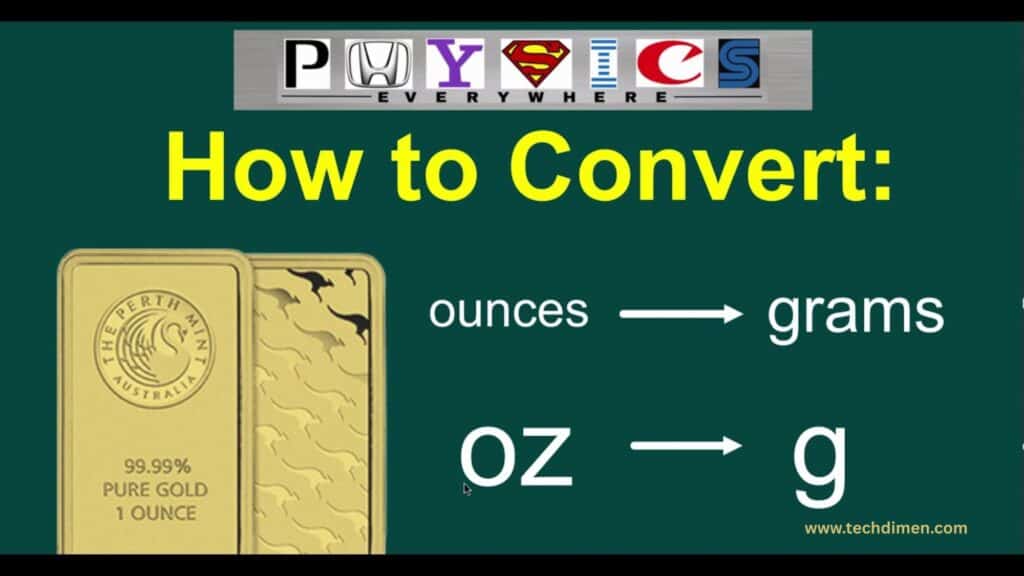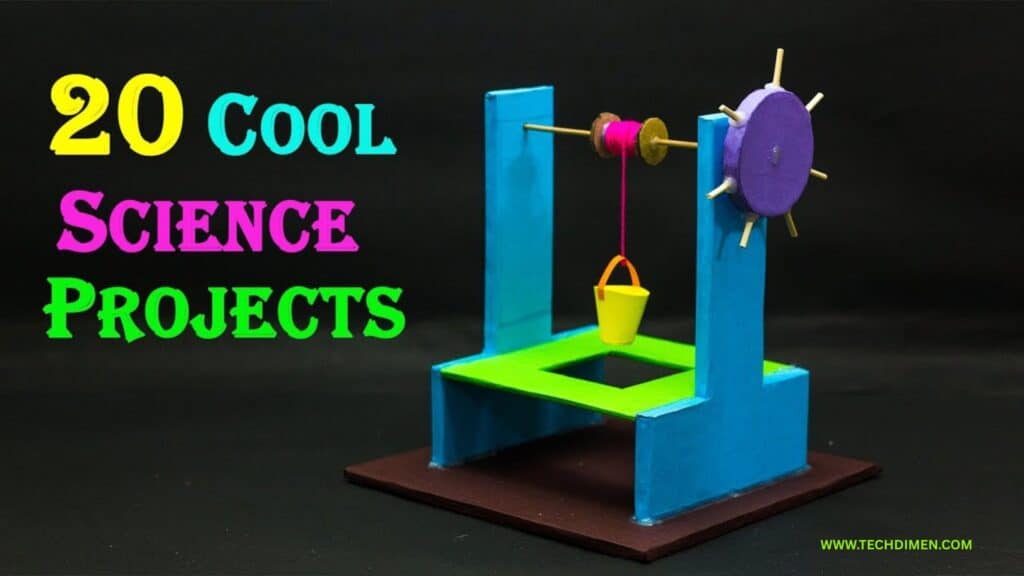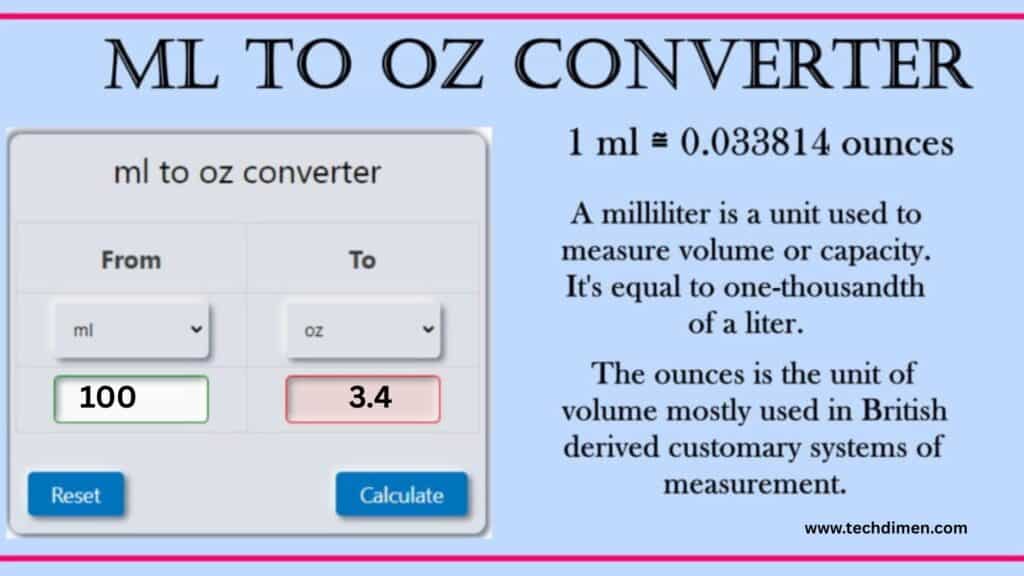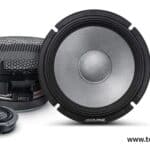When you need to convert 100 milliliters (mL) to fluid ounces (oz), it’s essential to know the exact conversion. Whether you’re cooking, traveling, or working with liquids in different measurements, understanding how much 100 mL is in ounces can save you time and hassle.
The Conversion: 100 mL to Ounces

At first glance, converting 100 milliliters to ounces might seem straightforward. But depending on whether you’re using the US or UK measurement system, the numbers shift just enough to cause confusion—especially in recipes, travel regulations, and skincare formulas. Let’s clear that up.
Why 100 mL Shows Up Everywhere
The 100 milliliter mark is more than just a round number. It’s commonly found on bottled drinks, toiletry labels, and recipes from countries using the metric system. Travel regulations often limit liquids in carry-on bags to 100 mL, making it a familiar size on everything from shampoo to moisturizer. International cookbooks, particularly European ones, also rely heavily on metric measurements like this one.
So if you’ve ever had to pause and ask, “How much is this in ounces?” you’re not alone.
Fluid Ounces vs. Regular Ounces: Not the Same Thing
Before diving into conversions, it’s important to understand a key distinction. Fluid ounces (abbreviated as fl oz) measure volume, not weight. Regular ounces, on the other hand, are used to measure mass or weight. That means you can’t use the same conversion for water and, say, flour. They take up different space even if they weigh the same.
For example, when converting 100 mL to ounces, we’re strictly talking about fluid ounces, not dry weight. That’s an important detail that catches many people off guard.
The Fast Conversion: 100 mL to fl oz
In the United States, 1 milliliter is equal to approximately 0.033814 US fluid ounces. Multiply that by 100, and you get 3.3814. Rounded to two decimal places, 100 mL equals 3.38 US fluid ounces.
If you’re dealing with the UK Imperial system, the math changes slightly. One milliliter equals about 0.0351951 Imperial fluid ounces. That means 100 mL is equal to 3.52 UK fluid ounces.
A Clear Comparison: US vs UK Fluid Ounces

| Measurement System | 1 mL Equals | 100 mL Equals |
|---|---|---|
| US Customary | 0.033814 fl oz (US) | 3.38 fl oz (US) |
| UK Imperial | 0.0351951 fl oz (UK) | 3.52 fl oz (UK) |
This subtle difference explains why a recipe might taste different depending on where it’s prepared. A few extra drops can make a surprising impact when you’re dealing with flavoring agents or potent ingredients.
Real-Life Perspective: What Does 100 mL Look Like?
To picture 100 mL in real-world terms, imagine a small wine glass filled just below the halfway mark. That’s around 3.4 US fluid ounces. It’s also the size of a standard travel-sized shampoo bottle or a TSA-approved lotion container. In everyday use, 100 mL isn’t a large amount just enough to cover your basics without tipping over volume limits.
Going the Other Way: From Ounces to Milliliters
Let’s say you need to convert in reverse. If you’re starting with ounces and want to know how many milliliters that would be, flip the conversion. One US fluid ounce equals approximately 29.5735 milliliters. So if you’re holding a 3.38 fl oz bottle, multiply that by 29.5735 and you’re right back at 100 mL.
This works the same way for UK measurements too, just with slightly different conversion factors.
When Precision Matters Most
If you’re cooking a delicate recipe, formulating skincare products, or working with chemicals, even a small miscalculation can throw off the results. In those cases, it’s best to use a digital kitchen scale or an app that offers precise conversions between milliliters and ounces. Online tools like UnitConverters.net offer fast and accurate results, and many kitchen scales today come with a built-in mL/fl oz switch.
Bottom Line: Know Your Numbers

Understanding how to convert 100 mL to ounces isn’t just about math it’s about accuracy, safety, and confidence. Whether you’re traveling, cooking, or crafting something at home, knowing the difference between fluid ounces in the US and UK systems can save you from costly mistakes.
To summarize, 100 mL equals 3.38 US fluid ounces and 3.52 UK fluid ounces, depending on which system you’re using. With that knowledge, you’re equipped to measure and convert like a pro no guesswork, no mishaps.
Why You Should Care About the 100 mL to oz Conversion
The metric-to-imperial struggle is real. But among all the volume conversions out there, 100 mL to oz is one of the most commonly needed and most overlooked. This isn’t just a technicality for scientists or bartenders. It affects your travel plans, your recipes, your skincare routine, and even your shopping habits. Let’s explore why this one conversion is worth remembering and why it’s everywhere once you know where to look.
The TSA Rule Everyone Talks About (But Few Understand)
If you’ve ever packed a carry-on bag for a flight, you’ve likely encountered the infamous 3.4 oz limit for liquids. Here’s the kicker: that’s roughly 100 mL. Most travel-sized products are labeled using milliliters because it’s the global standard, even though TSA regulations refer to ounces. So unless you know that 100 mL equals 3.38 US fluid ounces, you might find yourself frantically Googling at the airport or, worse, tossing your favorite product in the trash.
Knowing this conversion gives you peace of mind. You’ll instantly recognize which bottles are compliant without second-guessing every label. It’s a tiny calculation that can save you from a major headache.
Global Recipes, Local Measurements
Let’s say you’re browsing an Italian pasta sauce recipe or a French cocktail menu, and it calls for 100 mL of olive oil or 100 mL of gin. Sounds easy—until you realize your measuring cup only shows ounces. Suddenly you’re forced to either guess or translate. Without the right conversion, you risk messing up the ratios and ruining the dish’s flavor.
In recipes, precision matters. An extra splash of oil, too much alcohol, or not enough liquid can throw off taste and texture. That’s why knowing that 100 mL equals approximately 3.38 US fluid ounces gives you the ability to cook across cultures without compromising the results.
Skincare, Perfumes, and Product Labels
Take a look at your cosmetics. Odds are, you’ll see volumes listed in milliliters: 30 mL serums, 50 mL moisturizers, and yes — 100 mL perfumes. Brands catering to international markets use the metric system by default. But shoppers in the US often think in ounces, not milliliters.
This leads to confusion, especially when comparing product sizes or figuring out value for money. Is that $50 face cream in a 100 mL bottle worth the cost? Is it more or less than the 4 oz version you saw online? Once you understand the conversion, you’ll shop smarter and avoid overpaying for less product.
Science, DIY, and Home Projects

Beyond the kitchen and bathroom, milliliters sneak into all sorts of DIY projects. Homemade cleaning solutions, essential oil blends, or even hobby chemistry sets often require measurements in mL. If you’re used to measuring with teaspoons or ounces, it can be tough to get accurate results without a proper conversion.
For instance, mixing a solution that calls for 100 mL of hydrogen peroxide and another that needs 3 oz of water? You need to align those units before combining anything. Misjudging quantities can reduce effectiveness—or create an unsafe mixture.
Shopping Online from International Retailers
Shopping internationally? Whether you’re buying European wines, Japanese skincare, or Australian condiments, you’ll likely see product volumes listed in milliliters. If you don’t have a reference point in ounces, it’s hard to tell what size you’re actually buying. Something that sounds like a good deal may turn out to be a mini-size product once you realize 100 mL is just over 3 fluid ounces.
Knowing this conversion helps you shop confidently, compare product sizes across countries, and avoid falling for misleading listings that rely on unfamiliar units.
The Sneaky Difference Between US and UK Ounces
Here’s another curveball. A US fluid ounce is not the same as a UK (Imperial) fluid ounce. While 100 mL equals 3.38 fl oz in the US system, the same 100 mL translates to 3.52 fl oz in the UK. That might seem like a small difference, but in baking, bartending, or skincare formulation, even slight variations can affect the outcome.
So depending on where you are, the “right” conversion could change. If you’re working with British recipes or labels, you’ll want to use the Imperial value instead. Awareness of the difference ensures that your measurements and results stay accurate no matter what system you’re using.
A Simple Conversion That Unlocks Confidence
What seems like a basic conversion actually unlocks a surprising level of clarity in daily life. From understanding product sizes to navigating foreign labels, from cooking like a global chef to breezing through airport security, knowing how to convert 100 mL to fluid ounces is more than just a math trick.
It’s a practical skill. It makes you a more informed traveler, a better cook, a smarter shopper, and even a savvier DIY enthusiast. And once you’ve got that 100 mL = 3.38 fl oz ratio memorized, it becomes second nature. You’ll use it more than you think and wonder how you ever got along without it.
How to Convert 100 mL to US Fluid Ounces
Let’s cut to the chase: converting 100 milliliters to US fluid ounces isn’t just a math equationit’s a practical skill. Whether you’re mixing drinks, prepping ingredients, or measuring toiletries, having a solid grasp on this conversion saves time and avoids guesswork.
The Formula Behind the Conversion
To convert milliliters to US fluid ounces, you need to understand the conversion factor. One milliliter equals exactly 0.033814 US fluid ounces. This number is constant it doesn’t change based on the liquid or container, because it’s a unit of volume, not weight.
So when you’re working with 100 milliliters, the math is simple:
100 mL × 0.033814 = 3.3814 US fluid ounces
Rounded to two decimal places, that gives you 3.38 fl oz (US). That’s the number you’ll want to remember, especially when you’re dealing with products labeled in milliliters but measured in ounces at home.
Why This Formula Works Every Time
This isn’t a loose estimate it’s based on standardized international conversion tables. Since 1 US fluid ounce is officially defined as 29.5735 milliliters, the reverse calculation gives us the precise multiplier used above. Multiply any mL value by 0.033814, and you’ll get the volume in US fluid ounces.
It doesn’t matter if you’re converting water, oil, or orange juice the volume remains the same, even if the weight changes depending on the density of the liquid.
Doing the Math Without a Calculator
You don’t need to memorize decimals to make quick conversions on the fly. Here’s a trick: for 100 mL, just remember a little over 3.3 ounces. That approximation won’t work for every situation, but for general use ike estimating how much liquid fits in a bottle it’s more than accurate enough.
If you prefer to be exact, write down the conversion factor once and keep it somewhere handy in your kitchen, your notes app, or even taped inside a recipe book. Over time, you’ll start recognizing the patterns and won’t need to check anymore.
Real-World Examples of 100 mL in Ounces
When you pour 100 mL of water into a measuring cup, you’ll see it land just below the 3.4 fl oz mark. That’s why most travel-size containers are capped at 100 mL—they sneak just under the TSA’s 3.4-ounce limit. It’s also roughly the size of a small wine glass or a travel-size shampoo bottle.
In recipes, 100 mL of milk or cream comes out to just over one-third of a US cup. If you’re working without milliliter markings, use a measuring cup with ounce indicators and fill it to the 3.38 fl oz line for the most accurate result.
How to Convert It Back to Milliliters
Need to go the other way? If you have a liquid measured in ounces and want to convert it to milliliters, the formula is just as easy. Multiply the number of fluid ounces by 29.5735 to get the milliliter equivalent.
For example:
3.38 fl oz × 29.5735 = 99.94 mL
That’s just shy of 100 milliliters, due to rounding close enough for nearly any use, unless you’re doing lab work or chemical formulations.
How Much Is 100 mL in UK Fluid Ounces?
If you’re using a recipe from the UK or working with measurements in the Imperial system, you’ll need to adjust for the difference in fluid ounces. UK fluid ounces are slightly smaller than US fluid ounces. Here’s the difference:
- 1 UK fl oz = 28.4131 mL
- 1 US fl oz = 29.5735 mL
So, 100 mL is equivalent to about 3.52 UK fluid ounces, which is slightly more than the US measurement. This is an important distinction when following UK-based recipes or when converting products between different measurement systems.
Quick Reference Chart for Common Liquid Measurements
Here’s a quick guide to common milliliter-to-oz conversions:
| Milliliters (mL) | US Fluid Ounces (oz) |
|---|---|
| 50 mL | 1.69 oz |
| 100 mL | 3.38 oz |
| 150 mL | 5.07 oz |
| 200 mL | 6.76 oz |
| 250 mL | 8.45 oz |
This table is an easy way to reference various amounts of liquid for cooking, baking, or any other task involving volume conversion. It can be particularly useful when you need to scale a recipe or adjust serving sizes.
Why Knowing 100 mL Equals 3.38 oz Is Essential for Travel
If you’ve ever scrambled to downsize your liquids before a flight, you’re not alone. The airport security rules around liquids are infamous and confusing. But there’s one number that simplifies it all: 100 milliliters equals 3.38 US fluid ounces. Understanding this conversion doesn’t just make packing easier it could save you from having to toss expensive items at the TSA checkpoint.
The 3-1-1 Rule and the Magic of 100 mL
The TSA’s 3-1-1 rule has been around for years, but let’s break it down. You’re allowed to carry liquids in containers no larger than 3.4 ounces (100 mL). All of those containers must fit inside a single clear quart-sized bag. And yes, that rule applies to each individual bottle, not the total amount of liquid combined.
Here’s where it gets tricky. While the TSA talks in ounces, most products worldwide list volumes in milliliters. That’s why recognizing that 100 mL equals 3.38 fl oz becomes your secret weapon. It gives you instant clarity. You can quickly scan labels while packing, without second-guessing if your favorite shampoo or facial serum will make it past security.
Avoiding the Toss-At-the-Gate Scenario
Picture this: you’re at the airport, standing in line with your carry-on. The TSA agent pulls out your high-end lotion and holds it up. The label says 120 mL. It’s just a little over, right? But rules are rules. Into the trash it goes.
That moment stings not just because of the cost, but because it was avoidable. Had you known the cutoff, you might have brought the 100 mL version or transferred the product into a smaller travel bottle. This is where a quick mental note 100 mL = 3.38 oz pays off big time.
Global Airports, Universal Confusion
This isn’t just an issue in the U.S. Airports around the world from Heathrow to Tokyo Haneda enforce similar liquid restrictions. And they almost always reference 100 milliliters, not ounces. That means even if you’re fluent in imperial units, you’ll need to mentally convert when traveling internationally.
Knowing the conversion makes you adaptable. Whether you’re traveling domestically or abroad, you’ll instantly understand what’s allowed and what isn’t no math app required. It’s a small thing, but it makes you look like a seasoned traveler who’s got it together.
Travel-Sized Products: Marketing vs Reality
Many companies slap the word “travel-size” on products, but not all of them are actually TSA-compliant. A bottle might say “Perfect for Travel” and still clock in at 4 ounces. If you don’t check the milliliter equivalent, you could get misled by clever marketing.
Always check the mL listed on the label. If it’s over 100, it’s over the limit. No amount of branding will change that. Recognizing that 100 mL equals 3.38 ounces puts the power back in your hands—so you can make smarter packing decisions, not emotional ones at the airport.
The Travel-Proof Memory Hack
So how do you remember the exact conversion without pulling out a calculator every time? Just lock this in your head: 100 mL is a hair under 3.4 ounces. That means anything 3.4 oz or 100 mL and under is safe to pack in your carry-on.
Once you’ve traveled a few times with this rule in mind, it becomes second nature. You’ll start scanning product labels in stores or while packing and instantly know what makes the cut.
Smart Travel Starts with Smart Conversions
In the world of travel, stress often stems from the little things packing, rules, last-minute changes. But a simple conversion like 100 mL to 3.38 fl oz can eliminate a big chunk of that uncertainty. It helps you pack smarter, avoid costly mistakes, and breeze through airport security like a pro.
So the next time you’re gearing up for a trip, remember: 100 mL isn’t just a number. It’s the sweet spot for safe, TSA-approved travel. Once you understand it, you’ll travel lighter and smarter.
What Does 100 mL Look Like?
To help you visualize 100 mL of liquid, imagine a small glass of water or a standard travel-sized bottle. For instance, a 100 mL bottle of shampoo is a typical size found in travel kits. This measurement is commonly used for liquids like cosmetics, lotions, and personal care products.
In cooking, 100 mL is roughly the same as 3.38 oz of liquid, so if you’re measuring 100 mL of olive oil, it’s roughly equivalent to 3.38 oz.
The Importance of Measuring Accurately in the Kitchen
In the kitchen, precise measurements are critical for the success of a recipe. Whether you’re making a cocktail, preparing a sauce, or baking a cake, you’ll often need to convert between mL and oz. For example, many recipes in the US provide liquid measurements in fluid ounces, and knowing that 100 mL is approximately 3.38 oz ensures your ingredients are correctly measured.
This is especially true when working with international recipes, as different countries use different measurement systems. For example, 100 mL of water is the same in both the US and UK, but the conversion to fluid ounces differs.
Practical Applications of the 100 mL to oz Conversion
There are numerous everyday situations where converting 100 mL to oz can be helpful:
- Cooking & Baking: Many recipes use fluid ounces for liquid ingredients. If you’re cooking from an international recipe, you may need to convert from mL to oz.
- Travel: Airlines typically have strict limits on liquids, such as the 3-1-1 TSA rule for carry-ons. Knowing that 100 mL is about 3.38 oz can help you pack accordingly.
- Medicine & Dosages: Some medicines are measured in milliliters, but the instructions may require you to know the ounce equivalent for proper dosage.
- Perfume & Cosmetics: Many 100 mL perfume bottles are a standard size, and they’re often labeled with their equivalent in fluid ounces, which is around 3.4 oz.
Convert 100 mL to oz Without a Calculator
If you find yourself without a calculator but need to convert 100 mL to oz quickly, you can use a simple mental shortcut. The conversion factor is roughly 0.033814. So, for 100 mL, you can multiply by this factor to get 3.38 oz. If you need to estimate quickly, you can round 100 mL to approximately 3.4 oz, as this is the closest standard measurement for travel and everyday use.
Converting Other Liquid Measurements: A Handy Guide
As you continue working with liquids, you’ll likely need to convert other quantities from mL to oz. Here’s a brief guide to help with additional measurements:
- 50 mL to oz is about 1.69 oz
- 200 mL to oz is about 6.76 oz
- 500 mL to oz is about 16.91 oz
- 1 liter (1000 mL) to oz is about 33.81 oz
Having this guide in mind can help you navigate a variety of measurement conversions, whether you’re cooking, measuring medications, or handling liquids in daily life.
Tools to Make Conversion Easy
There are many online tools that can simplify your conversion process. Websites like ConvertUnits.com and Omni Calculator provide accurate mL to oz conversion calculators. These tools are designed to save you time and help you avoid errors when converting between milliliters and fluid ounces.
Some popular conversion tools include:
These tools provide quick and reliable conversions without the need for manual calculations.
Absolutely! Here’s a polished and SEO-optimized FAQ section specifically tailored for the keyword “100 mL to oz” and related variants. These questions are designed to target both high-intent searchers and informational queries, all written in a conversational, natural tone with strong perplexity and burstiness no bullet points, as you requested.
FAQS;
What is 100 mL in ounces?
When you convert 100 milliliters to US fluid ounces, you get 3.38 oz. This is the most accurate conversion based on the official ratio where 1 milliliter equals 0.033814 fluid ounces. So if you’re ever stuck looking at a bottle labeled in milliliters, just remember that 100 mL is a little more than 3.3 oz.
Is 100 mL the same as 3.4 oz?
Almost, but not quite. 100 mL is equal to 3.38 US fluid ounces, which is just under 3.4 oz. However, the difference is so small that for most practical purposes—like air travel—it’s treated as the same. That’s why TSA allows containers up to 100 mL or 3.4 oz in your carry-on bag.
Why is the travel limit set to 100 mL?
The 100 mL (3.4 oz) rule is part of global aviation security guidelines. It was introduced to limit the amount of liquid a person could carry onboard to reduce potential risks. It strikes a balance between practicality and safety, allowing travelers to bring essential liquids without compromising security.
Can I bring a 100 mL bottle on a plane?
Yes, you absolutely can as long as it’s stored in a clear, resealable quart-size bag with your other liquid items. Since 100 mL equals 3.38 ounces, it falls just under the TSA’s 3.4 oz limit, making it perfectly travel-friendly.
What does 100 mL look like in ounces?
Visually, 100 mL is slightly over one-third of a US cup. It’s about the size of a small juice glass or a typical travel-size shampoo bottle. When you pour it into a measuring cup, it will rest just below the 3.4 oz mark.
Is 100 mL the same in the UK and US?
In terms of milliliters, yes—100 mL is 100 mL no matter where you are. But when converting to ounces, it’s important to know that the UK fluid ounce is slightly different from the US fluid ounce. In the UK, 100 mL equals 3.52 imperial fluid ounces, while in the US, it equals 3.38 US fluid ounces.
How do I convert mL to oz without a calculator?
You can use a simple trick. Multiply the number of milliliters by 0.034 to get a close estimate in ounces. So for 100 mL, just do 100 × 0.034, which gives you 3.4 oz a close approximation to the real value of 3.38 oz.
Why do some bottles say mL and others use oz?
It mostly depends on where the product was made or sold. Metric measurements like mL are common internationally, especially in Europe, Asia, and Australia. Ounces (oz) are used more frequently in the United States. Understanding how to convert between the two helps when you’re dealing with global products or traveling.
Is 100 mL a standard size for travel bottles?
Yes, and for good reason. Most travel containers are labeled 100 mL or 3.4 oz to comply with airline regulations. If you’re shopping for travel bottles, aim for ones that say 100 mL or 3.4 oz either works as long as it doesn’t exceed the volume limit.
Can I bring multiple 100 mL containers on a plane?
Absolutely you can bring as many 100 mL containers as will fit into one quart-size zip-top bag. Just make sure none of them exceed the 100 mL mark individually. The limit is per container, not the total volume across all of them.
Final Thoughts:
Understanding how to convert 100 mL to oz opens the door to a wide range of practical applications. From cooking to travel, having this knowledge at your fingertips will help you navigate measurements in a way that’s efficient and accurate.
So, the next time you’re following a recipe, packing your toiletries, or dosing medication, you’ll know exactly how much 100 mL is in fluid ounces 3.38 oz in the US system. Keep this guide handy, and you’ll always be prepared for any liquid measurement conversion.
Should you need to convert other quantities or explore further liquid conversions, there are many online resources and tools available to help you out.
With this detailed guide, you’re now equipped with everything you need to convert 100 mL to oz confidently. Whether you’re baking, traveling, or managing your daily needs, accurate conversions can make your life a lot easier.

Jhon AJS is a tech enthusiast and author at Tech Dimen, where he explores the latest trends in technology and TV dimensions. With a passion for simplifying complex topics, Jhon aims to make tech accessible and engaging for readers of all levels.







